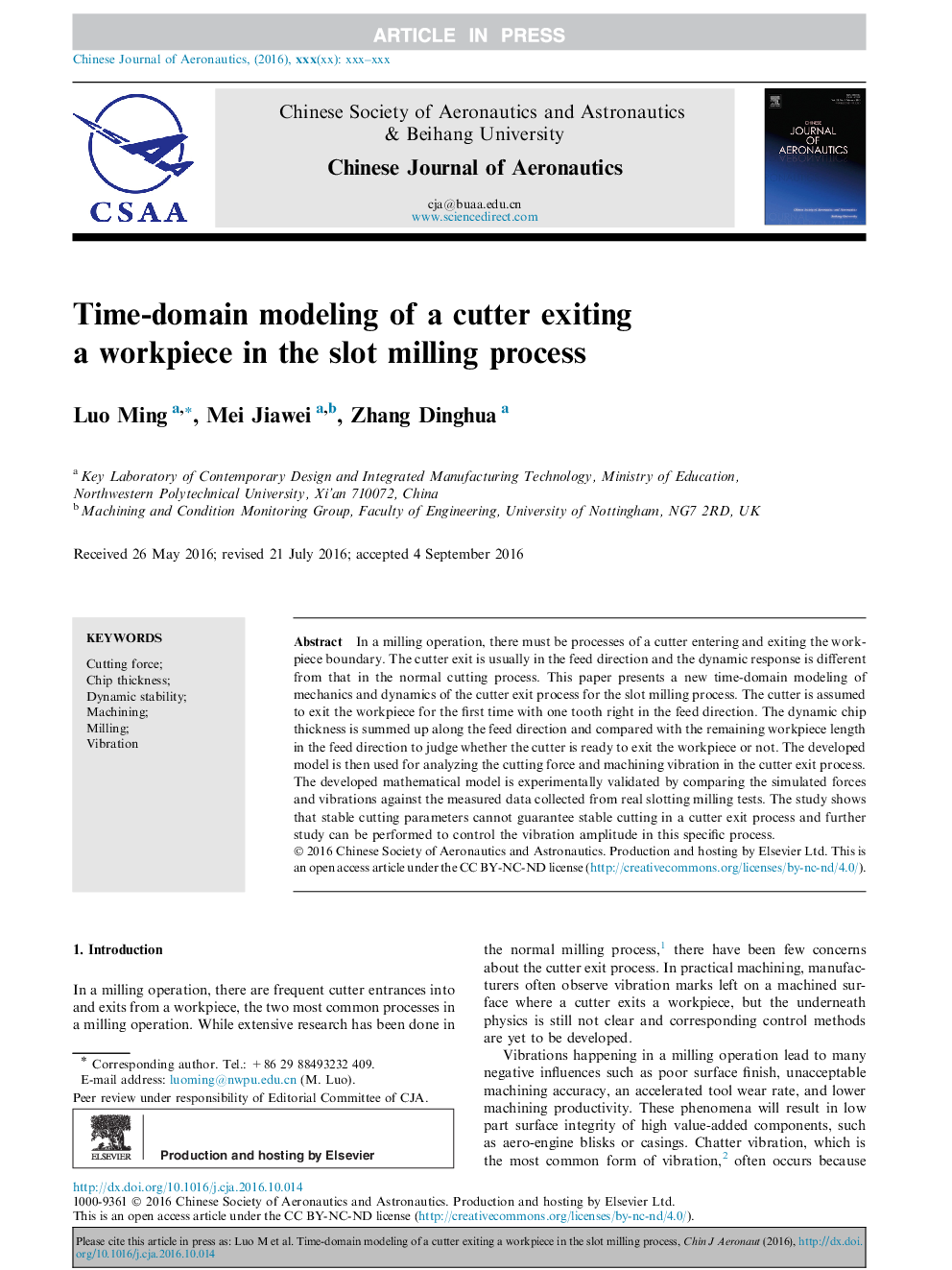| کد مقاله | کد نشریه | سال انتشار | مقاله انگلیسی | نسخه تمام متن |
|---|---|---|---|---|
| 7154309 | 1462498 | 2016 | 7 صفحه PDF | دانلود رایگان |
عنوان انگلیسی مقاله ISI
Time-domain modeling of a cutter exiting a workpiece in the slot milling process
ترجمه فارسی عنوان
مدل سازی زمان دامنه یک برش از یک قطعه کار در فرآیند آسیاب اسلات
دانلود مقاله + سفارش ترجمه
دانلود مقاله ISI انگلیسی
رایگان برای ایرانیان
کلمات کلیدی
نیروی برش، ضخامت تراشه، پایداری پویا، ماشینکاری، فرزکاری، لرزش،
ترجمه چکیده
در یک عملیات فرز، باید فرآیندهای یک برش وارد و خروج از مرز کار قطعه باشد. خروجی برش معمولا در جهت تغذیه است و پاسخ دینامیکی متفاوت از آنچه در روند برش طبیعی است. در این مقاله مدلسازی زمان دامنه جدیدی از مکانیک و دینامیک فرایند خروجی برش برای روند فرزکاری ارائه می شود. فرض بر این است که برش برای خروج از قطعه کار برای اولین بار با یک دندان راست در جهت تغذیه. ضخامت تراشه پویا در طول مسیر تغذیه خلاصه شده و در مقایسه با طول قطعه کار باقیمانده در جهت تغذیه، برای تعیین اینکه آیا برش آماده خروج از قطعه کار است یا خیر، مقایسه شده است. سپس مدل توسعه یافته برای تحلیل نیروی برش و ارتعاش ماشینکاری در فرایند خروجی برش استفاده می شود. مدل ریاضی توسعه یافته با استفاده از مقایسه نیروهای شبیه سازی شده و ارتعاشات در برابر داده های اندازه گیری شده جمع آوری شده از آزمون های واقعی تراشکاری شکسته، به صورت تجربی مورد تایید قرار گرفته است. این مطالعه نشان می دهد که پارامترهای برش پایدار نمی توانند برش پایدار را در فرآیند خروجی برش تضمین کنند و همچنین می توان برای بررسی دامنه ارتعاش در این فرآیند خاص، مطالعات بیشتری انجام شود.
موضوعات مرتبط
مهندسی و علوم پایه
سایر رشته های مهندسی
مهندسی هوافضا
چکیده انگلیسی
In a milling operation, there must be processes of a cutter entering and exiting the workpiece boundary. The cutter exit is usually in the feed direction and the dynamic response is different from that in the normal cutting process. This paper presents a new time-domain modeling of mechanics and dynamics of the cutter exit process for the slot milling process. The cutter is assumed to exit the workpiece for the first time with one tooth right in the feed direction. The dynamic chip thickness is summed up along the feed direction and compared with the remaining workpiece length in the feed direction to judge whether the cutter is ready to exit the workpiece or not. The developed model is then used for analyzing the cutting force and machining vibration in the cutter exit process. The developed mathematical model is experimentally validated by comparing the simulated forces and vibrations against the measured data collected from real slotting milling tests. The study shows that stable cutting parameters cannot guarantee stable cutting in a cutter exit process and further study can be performed to control the vibration amplitude in this specific process.
ناشر
Database: Elsevier - ScienceDirect (ساینس دایرکت)
Journal: Chinese Journal of Aeronautics - Volume 29, Issue 6, December 2016, Pages 1852-1858
Journal: Chinese Journal of Aeronautics - Volume 29, Issue 6, December 2016, Pages 1852-1858
نویسندگان
Luo Ming, Mei Jiawei, Zhang Dinghua,
